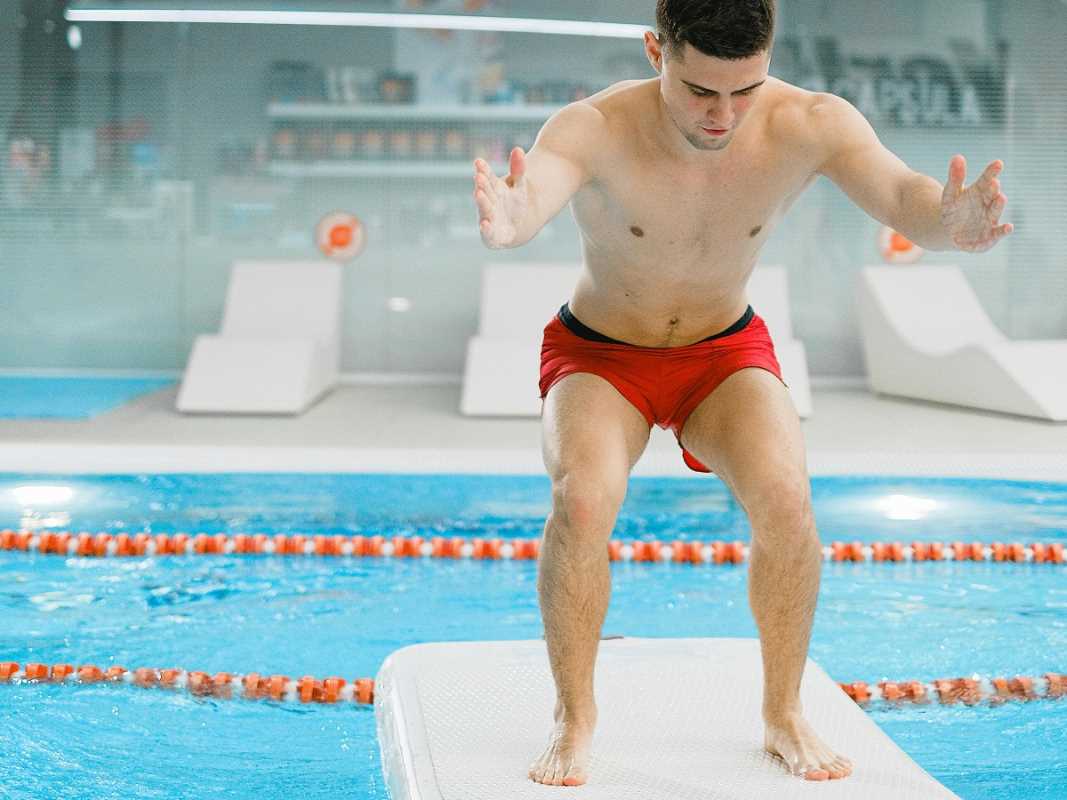The sport of swimming stands as a cornerstone in both recreational and competitive activities, requiring athletes to master endurance, speed, technique, and strategic training. Improving performance in the water remains essential for those who strive for excellence, and one increasingly popular method is interval training. This scientifically grounded strategy offers a structured approach that pushes swimmers to perform at their highest level while also ensuring adequate recovery. Its precise balance of high-intensity bursts and controlled rest periods leads to significant enhancements in aerobic capacity, power output, and overall efficiency, enabling swimmers to consistently achieve and exceed their performance goals remarkably.
The Science Behind Interval Training
Interval training involves alternating periods of high-intensity effort with phases of lower intensity or rest. This method leverages the body's physiological responses to exertion and recovery, promoting both aerobic and anaerobic conditioning. During high-intensity intervals, swimmers push their bodies to perform at near-maximum capacity, which increases heart rate, improves oxygen uptake, and enhances muscle strength. The subsequent recovery periods allow the body to replenish energy stores and remove metabolic byproducts, facilitating improved performance in subsequent intervals.
At the cellular level, interval training stimulates mitochondrial growth within muscle cells, enhancing the muscles' ability to utilize oxygen more efficiently. It also increases the production of lactate threshold, enabling swimmers to sustain higher intensities for longer durations. These adaptations contribute to overall endurance, speed, and resilience, making interval training a scientifically validated method for improving athletic performance in swimming.
Benefits of Interval Training for Swimmers
- Enhances cardiovascular fitness, leading to improved endurance and reduced fatigue during prolonged swims.
- Increases speed and power by challenging muscles to perform under high-intensity conditions.
- Boosts metabolic rate, aiding in more effective energy utilization and weight management.
- Improves lactate tolerance, allowing swimmers to maintain performance despite accumulating fatigue-inducing byproducts.
- Encourages efficient stroke technique by incorporating focused, high-intensity drills.
- Facilitates mental toughness by pushing swimmers to overcome challenging intervals.
Implementing Interval Training in Swimming Workouts
- Assess Current Fitness Levels: Begin by evaluating your current endurance, speed, and overall fitness to tailor interval sessions appropriately.
- Set Clear Goals: Define specific objectives, such as increasing sprint speed or enhancing endurance, to guide the structure of your intervals.
- Design the Interval Structure: Decide on the duration and intensity of high-efficiency periods followed by adequate rest or low-intensity recovery phases.
- Incorporate Variety: Utilize different interval formats, such as pyramid sets, ladder sets, or repeat intervals, to keep workouts engaging and comprehensive.
- Monitor Progress: Track performance metrics during sessions to assess improvements and adjust training intensity accordingly.
- Ensure Adequate Recovery: Schedule rest days and incorporate low-intensity workouts to prevent overtraining and promote muscle recovery.
- Seek Professional Guidance: Consult with coaches or trainers to refine interval techniques and ensure proper execution.
Interval Training Techniques for Swimmers
Several specific interval training techniques can be effectively integrated into swimming routines to target various aspects of performance enhancement:
Fartlek Intervals: Combining continuous swimming with unstructured bursts of speed, this technique helps improve both aerobic and anaerobic systems by varying pace spontaneously during a workout.
High-Intensity Interval Training (HIIT): Short, intense bursts of swimming followed by brief rest periods maximize cardiovascular and muscular endurance, making it ideal for competitive swimmers aiming to increase speed and power.
Broken Sets: Dividing a long-distance swim into smaller, manageable segments with brief rests helps build endurance while maintaining high efficiency in stroke technique.
Ladder Intervals: Gradually increasing and then decreasing the length of each interval challenges different energy systems and promotes comprehensive conditioning.
Tempo Intervals: Maintaining a steady, moderately high pace for specific durations enhances sustained speed and fosters better rhythm and coordination in the water.
Comparing Interval Training with Traditional Swimming Practices
Traditional swimming workouts often focus on steady, continuous swimming at a consistent pace, primarily targeting aerobic endurance. While this approach effectively builds foundational fitness, it may not adequately challenge the anaerobic systems or improve speed and power to the same extent as interval training.
In contrast, interval training introduces variability in intensity, pushing swimmers to operate at higher exertion levels and recover, which fosters greater overall performance improvements. Interval training’s emphasis on both high-intensity effort and recovery periods leads to more significant gains in speed, endurance, and metabolic efficiency compared to traditional steady-state swimming. Additionally, the structured nature of interval workouts allows for more precise tracking of progress and targeted conditioning, which can be more beneficial for competitive swimmers striving for peak performance.
Recovery and Adaptation in Interval Training
While interval training presents substantial benefits, incorporating proper recovery and adaptation strategies is essential to maximize its effectiveness and prevent injury. Adequate rest between high-intensity intervals allows the body to repair and strengthen muscle fibers, enhancing overall performance capabilities. Incorporating active recovery techniques, such as light swimming or stretching, can aid in reducing muscle soreness and promoting flexibility.
Additionally, periodization, which involves varying training intensity and volume over time, helps prevent plateauing and overtraining. This method ensures that swimmers continuously adapt and improve, maintaining optimal performance levels throughout their training cycles. Balancing intense interval sessions with lower-intensity workouts and rest days fosters sustained progress and long-term athletic development.
Nutritional Considerations for Interval Training
Supporting interval training with proper nutrition is critical for achieving optimal results. Consuming a balanced diet rich in carbohydrates provides the necessary energy reserves for high-intensity efforts, while adequate protein intake supports muscle repair and growth. Hydration also plays a vital role, as maintaining fluid balance is essential for performance and recovery.
Implementing pre- and post-workout nutrition strategies can further enhance the benefits of interval training. A meal or snack containing carbohydrates and protein before training ensures sufficient energy availability, while post-workout nutrition aids in replenishing glycogen stores and repairing muscle tissue. Consulting with a nutritionist can help swimmers develop personalized dietary plans that complement their interval training regimen, promoting overall health and performance.
Psychological Benefits of Interval Training
Beyond the physical advantages, interval training offers significant psychological benefits for swimmers. The structured nature of interval workouts fosters discipline and mental resilience, as athletes learn to push through challenging sets and recover efficiently. This mental toughness translates to improved focus and determination during competitions, enhancing overall performance under pressure.
Furthermore, the variability and progression inherent in interval training keep workouts engaging, reducing the likelihood of burnout and maintaining motivation. Setting and achieving incremental goals within interval sessions provides a sense of accomplishment, reinforcing a positive attitude toward training and competition. The combination of physical and psychological benefits makes interval training a comprehensive approach to athlete development.
Integrating Technology in Interval Training
Modern technology offers tools that can enhance the effectiveness of interval training for swimmers. Wearable devices and swim monitors can track performance metrics such as heart rate, stroke rate, and lap times, providing real-time feedback and allowing for precise adjustments to training intensity. Mobile apps designed for swimmers can help structure interval workouts, set goals, and monitor progress over time.
Virtual coaching platforms also enable swimmers to access expert guidance remotely, ensuring that interval training techniques are executed correctly and efficiently. By leveraging technology, swimmers can gain deeper insights into their performance, optimize their training plans, and stay motivated through data-driven progress tracking. This integration of technology ensures that interval training remains dynamic and tailored to individual needs, maximizing its benefits for swimming performance.
Safety Considerations in Interval Training
While interval training offers numerous benefits, it is important to approach it with safety in mind to prevent overtraining and injury. Gradually increasing the intensity and volume of interval sessions allows the body to adapt without excessive strain. Listening to one’s body and recognizing signs of fatigue or distress can help in adjusting workouts to maintain a healthy balance between challenge and recovery.
Proper warm-up and cool-down routines are essential components of interval training, preparing the muscles for intense effort and aiding in recovery afterward. Incorporating flexibility exercises and strength training can also support overall physical health, reducing the risk of imbalances and injuries. Consulting with a coach or healthcare professional can provide personalized recommendations to ensure that interval training is both effective and safe.
Interval training significantly boosts swimming performance by enhancing endurance, speed, and overall athletic capacity. Its structured combination of high-intensity efforts and strategic recovery makes it an invaluable tool for competitive swimmers.
 (Image via
(Image via





